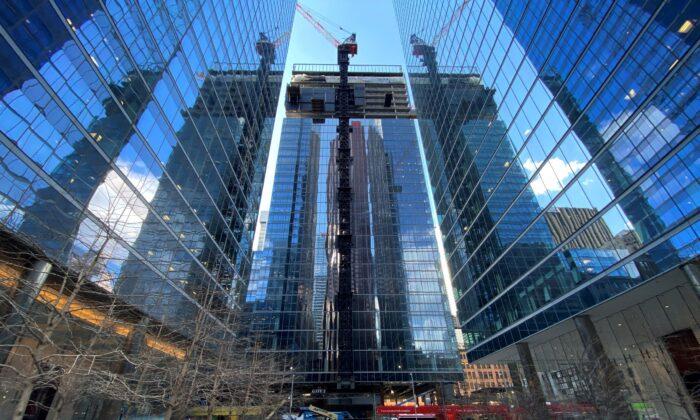Canada’s downtown office vacancy rate rose to a record high of 19.4 percent in the final quarter of 2023, due in part to weak demand in the country’s largest city, according to a report from real estate and investment firm CBRE.
The report attributes the most recent increase to a combination of a slowdown in leasing as more companies move to work-from-home models and a raft of newly completed projects hitting the market.
The city saw 624,550 square feet of new office space completed in the fourth quarter of 2023 alone as part of a building boom that started before the pandemic and has taken several years to complete.
Excluding Toronto, national net absorption of office space would have been positive in the final quarter of the year due to an overall construction slowdown. Net absorption rate is the pace at which office space is leased as it becomes available.
The CBRE described Calgary as a city with a very high vacancy rate that is finally seeing some improvement. Although Calgary’s downtown vacancy rate sat at 30.2 percent last quarter, it still had a positive net absorption of 667 square feet.
Improvements were also recorded in Edmonton, Halifax, Ottawa, and Vancouver for the fourth quarter of 2023.
Edmonton has had two consecutive quarters of positive net absorption with downtown office vacancy dropping 22.9 percent, while Halifax also saw a dip in vacancy, falling to 17.9 percent, the report found. Nova Scotia’s capital city has now posted seven consecutive quarters of positive net absorption, even in the suburbs.
Construction
Development of office space continues to decline, with 10.9 million square feet under construction nationally. New construction accounts for 2.2 percent of inventory, with 54.4 percent of that space being pre-leased, the report found, making it the lowest construction total since the third quarter of 2017.Construction timelines stretched throughout 2023, with many projects now in the final stages with anticipated delivery in early 2024, the report said. This includes 160 Front St. W. in Toronto and the National Bank Tower in Montreal, both of which exceed one million square feet.







